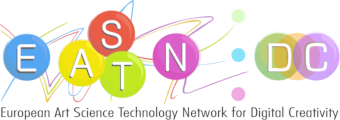When designing books or exhibition catalogues to a major part of the work process is the photography of the artifacts. A good or a bad photo can alter not only the design layout but also the quality, the historical value, the colors and the overall look of the publication. In many cases the designer must manage artifacts with extremely delicate art or artifacts with only historical value but with minor or no art elements.
Most designers tend to overestimate or underestimate an artifact depending on the available photo. In many cases the photo was taken with no color bars, in a bad light setup, behind protection glass and or even blurred. Not all the museums have the setup or the space to dedicate to a decent photo studio, purchase a high-end camera or very good lenses, they don’t even have an in-house photographer and in some cases the depend on the amateur knowledge of any of the available employees. In many cases it is hard to hire a professional to take high end photos of archaeological artifacts, since this process requires special knowledge of lighting but most important the photograph must cooperate with the designer of the final book layout.
Another major aspect of the photograph are the detail level and the sharpness of the photo. They must be at the highest possible level. Even the slightest blurring might cause a detail’s miss and this is a factor diminishing quality. The reader-observer must have a clear and high definition view of the artifact. Also color must be as accurate as possible. After thousands of years of inactivity, most ancient artifacts have been buried in the ground or underwater. This caused them to alternate their color partially or fully, eradicate their surface, or destroy them partially. When using photos in printed, it is the present state of preservation that is important instead of their original status. Even the best-preserved artifacts must have a high accuracy in color. Even if we have high-quality images, bad or slightly different color values can cause an alternated material, alter its region of origin or even the material crafted. In many editions, the designer encounters the problem of bad color correction or bad white balanced photos causing altered colors in final print. Color management techniques and high precision equipment is required to have the best result. In most cases, pictures are taken in a low light environment, behind glass, with a high ISO option. That is one major problem with photographs of archaeological material.
The position of the artifact is of great importance. It is essential to promote all the values inherent in it and gain a better understanding of the model. Another interesting approach is to treat statues as fashion models and use special lighting in a studio. Especially classical statues where the pose and anatomy are very realistic, this approach attains to a very elegant look, as long as texts are written in such a way a way to enhance it. In scientific books, it is common to have pictures with not great quality, since they mostly refer to finds from excavations and the photographic equipment available is not usually professional. Lastly, some finds, even without any restoration process are appealing and of great historical value.
Overall there is no particular way to manage pictures and text together. The photograph though must be of great professional quality. There are some techniques to achieve better results, but besides the knowledge and the experience of a photographer the equipment has a major and significant role. The designer must also have a knowledge of color managing, correcting and the experience to identify the correct material of any artifact and guide the print process to achieve the better result.
Back
“Reflections: Bridges between Technology and Culture, Physical and Virtual”
is supported by:






